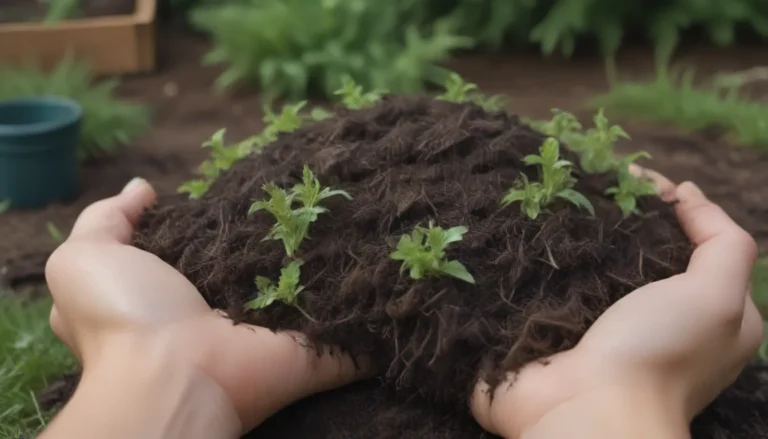The Ultimate Guide to Growing Sweet Corn: Tips, Tricks, and Varieties

Are you looking to grow your own delicious, sweet corn at home? Look no further! In this comprehensive guide, we’ll walk you through everything you need to know about planting, caring for, and harvesting sweet corn right in your own backyard. Whether you’re a seasoned gardener or a beginner looking to try your hand at growing corn for the first time, this article is for you.
Corn 101: Understanding the Basics
Corn is a versatile and popular vegetable that is a staple in many diets around the world. It’s not only delicious to eat, but it’s also surprisingly easy to grow. Corn plants grow tall, producing husked ears filled with tender kernels. While most corn varieties look similar from the outside, they can range in color from white and yellow to red and even bicolor. The key to growing sweet corn successfully is selecting the right variety and providing the proper care throughout the growing season.
How to Plant Sweet Corn
When to Plant
Plant sweet corn in the spring after all danger of frost has passed. The soil temperature should be at least 60 degrees Fahrenheit. Avoid starting seeds indoors, as sweet corn seedlings do not transplant well.
Selecting a Planting Site
Choose a planting site with rich, well-draining soil and plenty of sunlight. Corn plants can grow quite tall, so ensure they won’t shade out shorter crops nearby. Container gardening is also an option for smaller corn varieties.
Spacing, Depth, and Support
Plant corn seeds about an inch deep with 8 to 12 inches of spacing between plants. Rows should be 30 to 36 inches apart. Planting in blocks of at least 4 rows helps ensure proper pollination. Corn plants typically do not require support structures unless planted in a windy area.
Sweet Corn Plant Care
Light
Corn plants thrive in full sun, requiring at least six hours of direct sunlight each day for optimal growth and ear development.
Soil
Prepare the soil by ensuring it is loose, loamy, and slightly acidic to neutral in pH. Heavy soils can inhibit corn’s root system, so consider amending the soil with compost or manure. Conduct a soil test before planting to determine if any additional nutrients are needed.
Water
Water sweet corn regularly, especially during dry periods or when the cobs begin to swell. Aim for about an inch of water per week, applied deeply once a week rather than in small amounts daily. Keep the area around the plants free of weeds to prevent competition for water and nutrients.
Temperature and Humidity
Corn plants prefer temperatures between 60 and 80 degrees Fahrenheit. If planting in a colder climate, consider using black plastic to warm the soil before planting. Humidity is generally not an issue as long as the soil remains consistently moist.
Fertilizer
Corn is a heavy feeder and benefits from a nitrogen-rich soil. Apply compost, manure, or fish emulsion to the soil before planting, and fertilize again once the plants reach 8 inches in height. Follow the instructions on the fertilizer label for best results.
Pollination
Because sweet corn is wind-pollinated, planting in blocks rather than rows helps ensure good pollination. Keep different corn varieties separated by at least 25 feet to prevent cross-pollination.
Types of Sweet Corn
There are numerous varieties of sweet corn available, each with its own unique characteristics and flavor profiles. Some popular cultivars include:
- ‘Early Sunglow’
- ‘Silver Queen’
- ‘Golden Bantam’
- ‘Tuxedo’
Sweet Corn vs. Popcorn
While sweet corn and popcorn may look similar, they have distinct differences in taste and texture. Sweet corn is harvested when the kernels are juicy and sweet, while popcorn is harvested once the kernels have dried and hardened. Understanding these differences can help you select the right type of corn for your needs.
Harvesting Sweet Corn
Harvesting sweet corn is a rewarding experience, as you get to enjoy the fruits of your labor at peak freshness. Look for dark green ears with brown tassels that feel firm when squeezed. To test for ripeness, pierce a kernel with your fingernail – if milky liquid spurts out, the corn is ready to be picked. Remove the ears by pulling downward and twisting them off the stalk. For best results, consume or preserve sweet corn immediately after picking.
How to Grow Sweet Corn in Pots
If you’re limited on garden space or have poor soil conditions, consider growing sweet corn in containers. Opt for shorter varieties that reach a maximum height of 5-6 feet and plant them in blocks for pollination. Ensure the containers have proper drainage and water as needed to keep the soil moist but not waterlogged.
Propagating and Overwintering Sweet Corn
Sweet corn can be propagated by saving seeds from mature ears for planting the following season. Be cautious of cross-pollination with other corn varieties. Since sweet corn is an annual plant, no overwintering is necessary. Simply allow the stalks to dry out and use them for fall decorations.
Common Pests and Plant Diseases
Sweet corn plants may be susceptible to pests such as rodents, raccoons, and birds as the ears ripen. Corn borers and fungal diseases like smut can also pose problems. Use organic pesticides as needed and remove affected plants promptly to prevent the spread of disease.
In conclusion, growing sweet corn at home is a rewarding and relatively simple task that can yield delicious results. By following the guidelines outlined in this article and selecting the right variety for your growing conditions, you can enjoy fresh, homegrown sweet corn throughout the summer months. Happy gardening!





